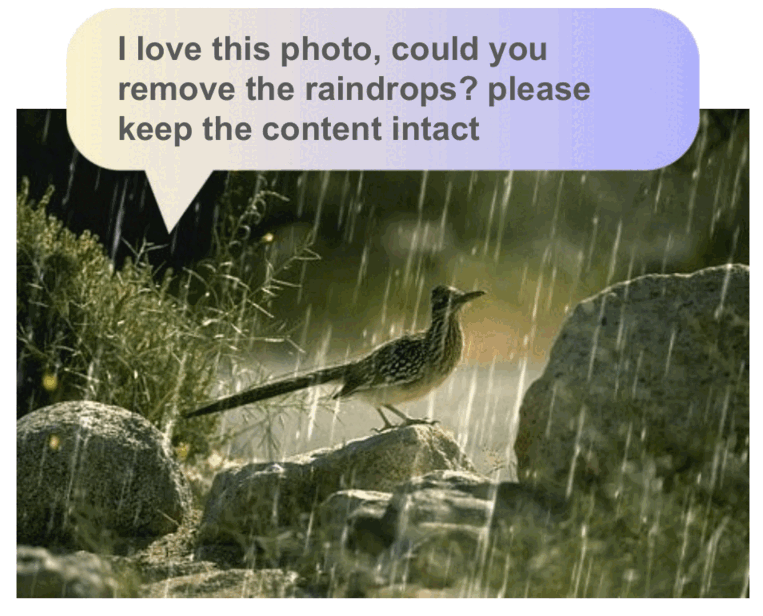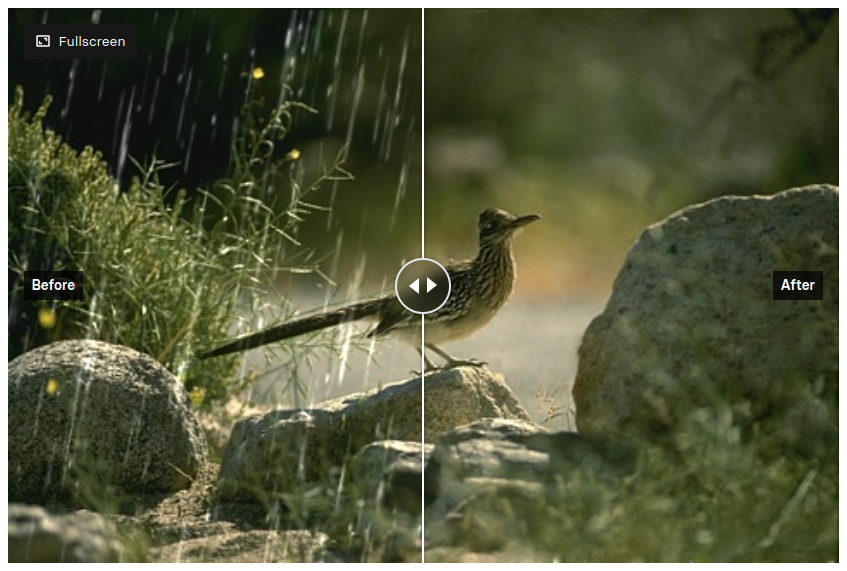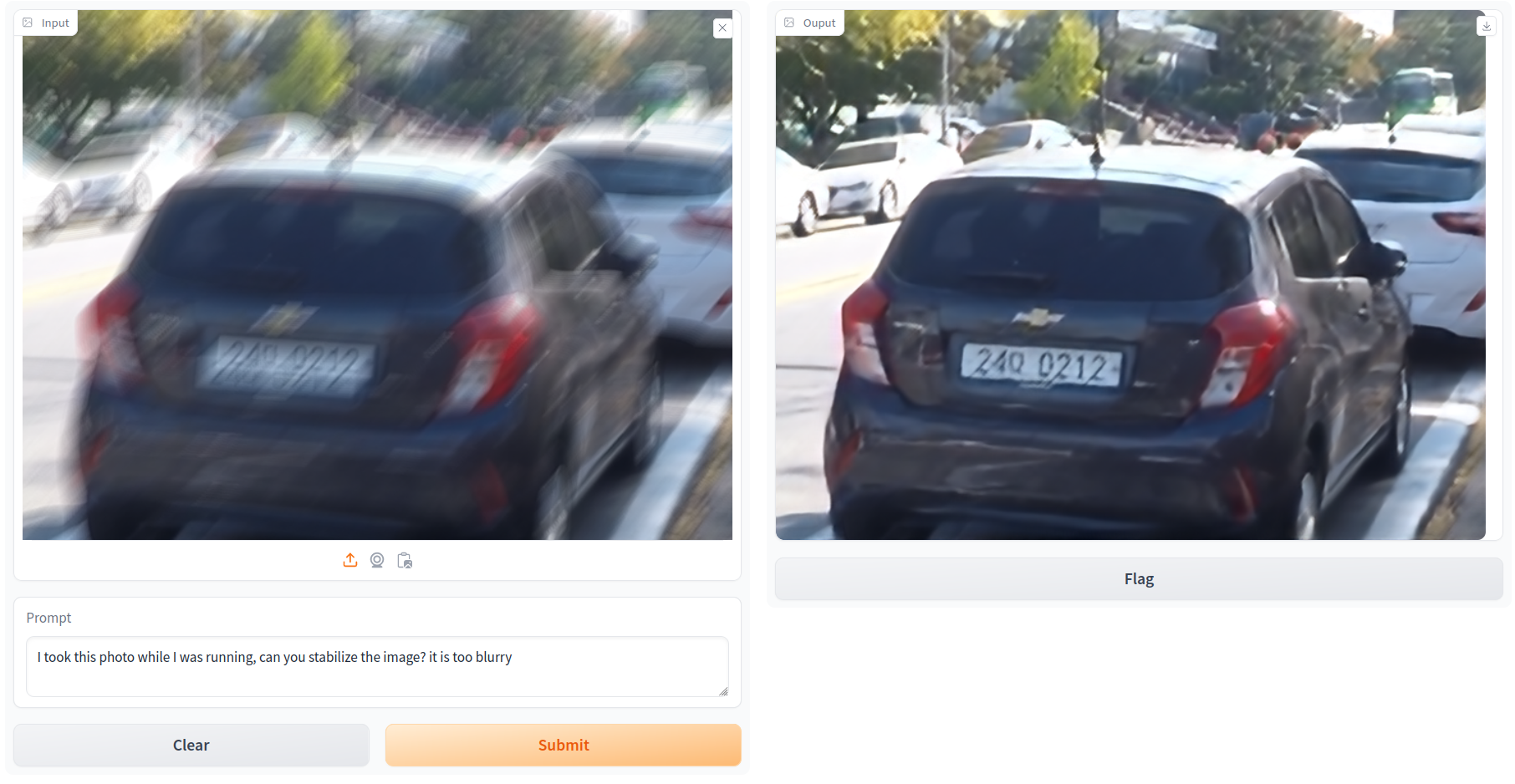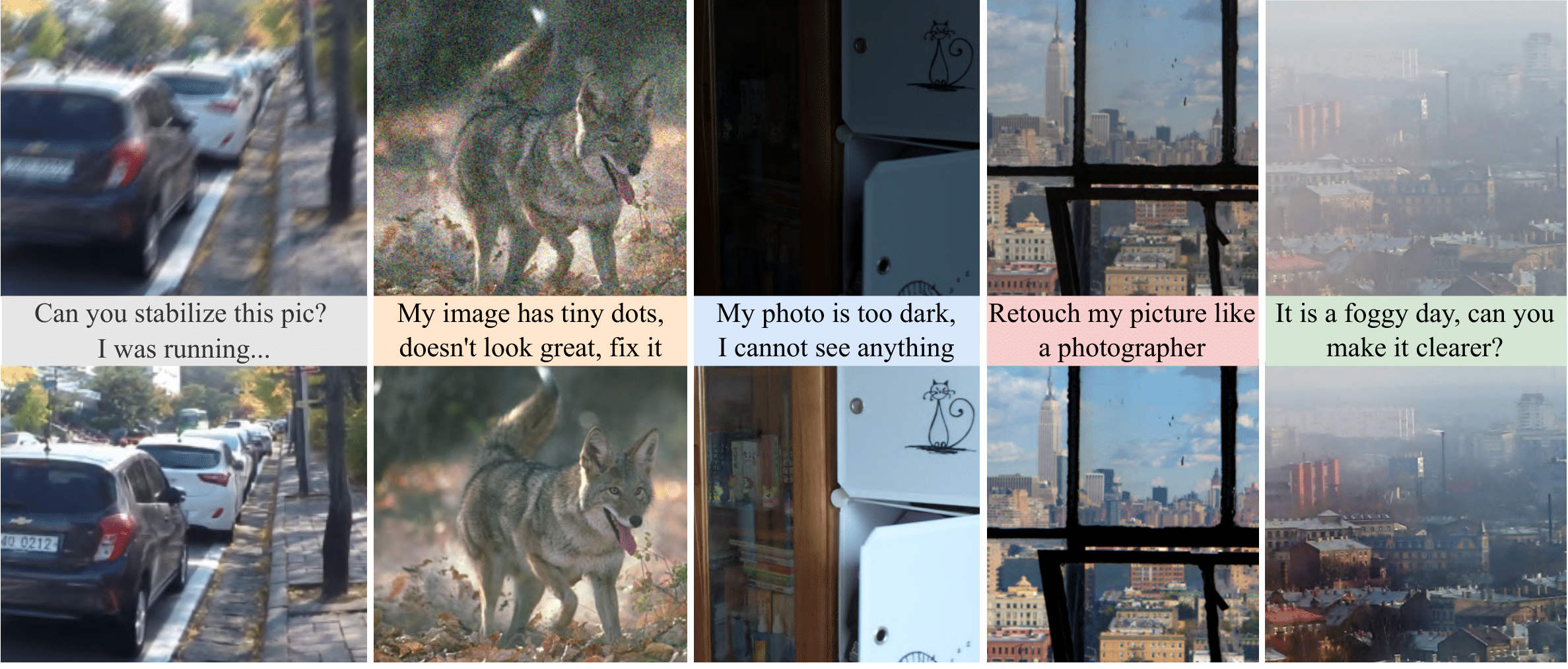Marcos V. Conde, Gregor Geigle, Radu Timofte
Computer Vision Lab, University of Wuerzburg | Sony PlayStation, FTG
InstructIR takes as input an image and a human-written instruction for how to improve that image. The neural model performs all-in-one image restoration. InstructIR achieves state-of-the-art results on several restoration tasks including image denoising, deraining, deblurring, dehazing, and (low-light) image enhancement.
🚀 You can start with the demo tutorial
Abstract (click me to read)
Image restoration is a fundamental problem that involves recovering a high-quality clean image from its degraded observation. All-In-One image restoration models can effectively restore images from various types and levels of degradation using degradation-specific information as prompts to guide the restoration model. In this work, we present the first approach that uses human-written instructions to guide the image restoration model. Given natural language prompts, our model can recover high-quality images from their degraded counterparts, considering multiple degradation types. Our method, InstructIR, achieves state-of-the-art results on several restoration tasks including image denoising, deraining, deblurring, dehazing, and (low-light) image enhancement. InstructIR improves +1dB over previous all-in-one restoration methods. Moreover, our dataset and results represent a novel benchmark for new research on text-guided image restoration and enhancement.
-
Upload all test results for comparisons (ETA 1st Feb)
-
Upload models to HF 🤗 (download the models here)
-
🤗 Hugging Face Demo try it now
-
Google Colab Tutorial (check demo.ipynb)
Try it directly on 🤗 Hugging Face at no cost, no code.
🚀 You can start with the demo tutorial. We also host the same tutorial on google colab so you can run it using free GPUs!.
 |
 |
We made a simple Gradio demo you can run (locally) on your machine here. You need Python>=3.9 and these requirements for it: pip install -r requirements_gradio.txt
python app.py

You can download the paper results from here. We test InstructIR in the following benchmarks:
| Dataset | Task | Test Results |
|---|---|---|
| BSD68 | Denoising | Download |
| Urban100 | Denoising | Download |
| Rain100 | Deraining | Download |
| GoPro | Deblurring | Download |
| LOL | Lol Image Enhancement | Download |
| MIT5K | Image Enhancement | Download |
TODO: Add download links for all the benchmarks.
Sometimes the blur, rain, or film grain noise are pleasant effects and part of the "aesthetics". Here we show a simple example on how to interact with InstructIR.
As you can see our model accepts diverse humman-written prompts, from ambiguous to precise instructions. How does it work? Imagine we have the following image as input:
Now we can use InstructIR. with the following prompt (1):
I love this photo, could you remove the raindrops? please keep the content intact
Now, let's enhance the image a bit further (2).
Can you make it look stunning? like a professional photo
The final result looks indeed stunning 🤗 You can do it yourself in the demo tutorial.
Disclaimer: please remember this is not a product, thus, you will notice some limitations. As most all-in-one restoration methods, it struggles to generalize on real-world images -- we are working on improving it.
-
How should I start? Check our demo Tutorial and also our google collab notebook.
-
How can I compare with your method? You can download the results for several benchmarks above on Results.
-
How can I test the model? I just want to play with it: Visit our 🤗 Hugging Face demo and test ir for free,
-
Why aren't you using diffusion-based models? (1) We want to keep the solution simple and efficient. (2) Our priority is high-fidelity --as in many industry scenarios realted to computational photography--.
This work was partly supported by the The Humboldt Foundation (AvH). Marcos Conde is also supported by Sony Interactive Entertainment, FTG.
This work is inspired in InstructPix2Pix.
For any inquiries contact Marcos V. Conde: marcos.conde [at] uni-wuerzburg.de
@misc{conde2024instructir,
title={High-Quality Image Restoration Following Human Instructions},
author={Marcos V. Conde, Gregor Geigle, Radu Timofte},
year={2024},
journal={arXiv preprint},
}

















